Polarized thinking example
Polarized Thinking: A Cognitive Distortion
3 minutes
Polarized thinking is automatic and makes us generalize situations without stopping to examine them first. People who think this way usually say things like “I never do anything right" or "I always end up losing".
Last update: 11 July, 2020
Polarized thinking is a cognitive distortion. In other words, it’s a reasoning mistake we make without realizing it. It makes us process information incorrectly and this leads to emotional distress.
Cognitive distortions were described by Albert Ellis and Aaron Beck. In general, they’re misconceptions that lead to dysfunctional emotional states. This includes irrational fears, feeling sad for no reason, etc. Polarized thinking is one of many forms of cognitive distortion.
Polarized thinking is an extreme simplification of reality. Things are either black or white, good or bad. We don’t see the nuances that exist between one extreme and another. People with this type of distortion feel comfortable placing reality between two extremes. Why does it happen? How do we beat it? Let’s take a look.
The characteristics of polarized thinking
The main characteristic of polarized thought is the tendency to generalize and encompass different realities under one category. Therefore, people who think like this often use absolute words such as “always”, “never”, “everything”, and “nothing”. They do this automatically and put every isolated incident that comes their way into one of those boxes.
These extreme categories are generally very negative. They’re used to reiterate the existence of something bad. People who think this way usually say things like “I do everything wrong” or “Everyone takes advantage of me”.
For those who have polarized thoughts, it’s as if nuances didn’t exist. They build a great deal of their identity around those classifications and look for a way to fit everything around them. Although reality proves that they’re mistaken, they resist abandoning their radicalization.
What causes this cognitive distortion?
In general, polarized thinking is a characteristic of those who adopt a victim role in life. No one does this because they want to. It’s an emotional block caused by bad experiences. At the root of it all, they believe they’ve experienced bad things that they didn’t deserve.
The victim takes on the role of a passive object of circumstances or “destiny”. They don’t believe that they have any control over the negative things they’ve experienced nor how they’ve handled them. Instead, they believe that they’ve been a passive depository for pain and can’t do anything about it.
People who consider themselves victims haven’t discovered tools nor acquired resources they can use to overcome many of their challenges. Instead, they project their resentment and develop polarized thinking.
Overcoming polarized thinking
This type of thinking stems from prior unresolved challenges. Overcoming it means taking on a new perspective on our past and present. Believing that you’re the victim allows you to relieve yourself of responsibility. To escape, you have to accept that you’re responsible for what happens to you and, above all, for how you respond.
Believing that you’re the victim allows you to relieve yourself of responsibility. To escape, you have to accept that you’re responsible for what happens to you and, above all, for how you respond.
A good way to start is to pay attention to our automatic responses and to ring a mental alarm when we say categorical words like “never”, “always”, “everything”, or “nothing”. Afterward, we should stop and think about just how unreasonable our statement is.
Furthermore, it’s important to think about the situations in which we feel like victims. Maybe it’s a romantic relationship in which we’re unhappy or a job we feel is too demanding.
Is putting up with it our only option? Or are there other ways out that we’re afraid to take? Perhaps polarized thinking is an indicator that we’re not taking ourselves seriously enough. Maybe we need some time and space to think about what we’re dealing with.
It might interest you...15 Cognitive Distortions to Blame for Your Negative Thinking
A distorted thought or cognitive distortion — and there are many — is an exaggerated pattern of thought that’s not based on facts.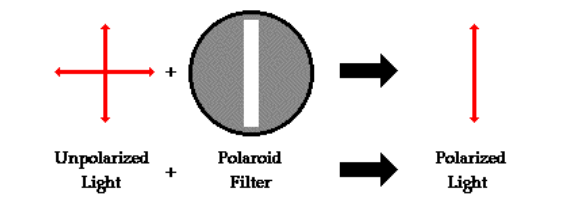 It consequently leads you to view things more negatively than they really are.
It consequently leads you to view things more negatively than they really are.
In other words, cognitive distortions are your mind convincing you to believe negative things about yourself and your world that are not necessarily true.
Our thoughts have a great impact on how we feel and how we behave. When you treat these negative thoughts as facts, you may see yourself and act in a way based on faulty assumptions.
Everyone falls into cognitive distortions on occasion. It’s part of the human experience. This happens particularly when we’re feeling down.
But if you engage too frequently in negative thoughts, your mental health can take a hit.
You can learn to identify cognitive distortions so that you’ll know when your mind is playing tricks on you. Then you can reframe and redirect your thoughts so that they have less of a negative impact on your mood and behaviors.
The most common cognitive distortions or distorted thoughts include:
- filtering
- polarization
- overgeneralization
- discounting the positive
- jumping to conclusions
- catastrophizing
- personalization
- control fallacies
- fallacy of fairness
- blaming
- shoulds
- emotional reasoning
- fallacy of change
- global labeling
- always being right
You may identify with some more than others or recognize you tend to use one in particular for specific situations. This is natural.
This is natural.
Self-examination might be the first step toward reversing negative thinking and some of these thought patterns.
Here’s a closer look at the list of cognitive distortions:
Filtering
Mental filtering is draining and straining all positives in a situation and, instead, dwelling on its negatives.
Even if there are more positive aspects than negative in a situation or person, you focus on the negatives exclusively.
Example
It’s performance review time at your company, and your manager compliments your hard work several times. In the end, they make one improvement suggestion. You leave the meeting feeling miserable and dwell on that one suggestion all day long.
Polarization or all-or-nothing thinking
Polarized thinking is thinking about yourself and the world in an “all-or-nothing” way.
When you engage in thoughts of black or white, with no shades of gray, this type of cognitive distortion is leading you.
Example
Your coworker was a saint until she ate your sandwich. Now, you cannot stand her. Or, you got a B on your last test, so you have failed at being a good student despite getting only A’s before that.
All-or-nothing thinking usually leads to extremely unrealistic standards for yourself and others that could affect your relationships and motivation.
Black-or-white thoughts may also set you up for failure.
Example
You’ve decided to eat healthy foods. But today, you didn’t have time to prepare a meal, so you eat a bacon burger. This immediately leads you to conclude that you’ve ruined your healthy eating routine, so you decide to no longer even try.
When you engage in polarized thinking, everything is in “either/or” categories. This might make you miss the complexity of most people and situations.
Overgeneralization
When you overgeneralize something, you take an isolated negative event and turn it into a never-ending pattern of loss and defeat.
With overgeneralization, words like “always,” “never,” “everything,” and “nothing” are frequent in your train of thought.
Example
You speak up at a team meeting, and your suggestions are not included in the project. You leave the meeting thinking, “I ruined my chances for a promotion. I never say the right thing!”
Overgeneralization can also manifest in your thoughts about the world and its events.
Example
You’re running late for work, and on your way there, you hit a red light. You think, “Nothing ever goes my way!”
Discounting the positive
Discounting positives is similar to mental filtering. The main difference is that you dismiss it as something of no value when you do think of positive aspects.
Example
If someone compliments the way you look today, you think they’re just being nice.
If your boss tells you how comprehensive your report was, you discount it as something anyone else could do.
If you do well in that job interview, you think it’s because they didn’t realize you’re not that good.
Jumping to conclusions
When you jump to conclusions, you interpret an event or situation negatively without evidence supporting such a conclusion. Then, you react to your assumption.
Example
Your partner comes home looking serious. Instead of asking how they are, you immediately assume they’re mad at you. Consequently, you keep your distance. In reality, your partner had a bad day at work.
Jumping to conclusions or “mind-reading” is often in response to a persistent thought or concern of yours.
Example
You feel insecure about your relationship. So, when you see your partner looking serious, you assume they might be losing interest in you.
Catastrophizing
Catastrophizing is related to jumping to conclusions. In this case, you jump to the worst possible conclusion in every scenario, no matter how improbable it is.
This cognitive distortion often comes with “what if” questions. What if he didn’t call because he got into an accident? What if she hasn’t arrived because she really didn’t want to spend time with me? What if I help this person and they end up betraying or abandoning me?
Several questions might follow in response to one event.
Example
What if my alarm doesn’t go off? What if then I’m late for the important meeting? What if I get fired after I’ve worked so hard for this job?
Personalization
Personalization leads you to believe that you’re responsible for events that, in reality, are completely or partially out of your control.
This cognitive distortion often results in you feeling guilty or assigning blame without contemplating all factors involved.
Example
Your child has an accident, and you blame yourself for allowing them to go to that party.
You feel that if your partner had woken earlier, you would have been ready on time for work.
With personalizing, you also take things personally.
Example
Your friend is talking about their personal beliefs regarding parenting, and you take their words as an attack against your parenting style.
Control fallacies
The word fallacy refers to an illusion, misconception, or error.
Control fallacies can go two opposite ways: You either feel responsible or in control of everything in your and other people’s lives, or you feel you have no control at all over anything in your life.
Example
You couldn’t complete a report that was due today. You immediately think, “Of course I couldn’t complete it! My boss is overworking me, and everyone was so loud today at the office. Who can get anything done like that?”
In this example, you place all control of your behavior on someone else or an external circumstance. This is an external control fallacy.
The other type of control fallacy is based on the belief that your actions and presence impact or control the lives of others.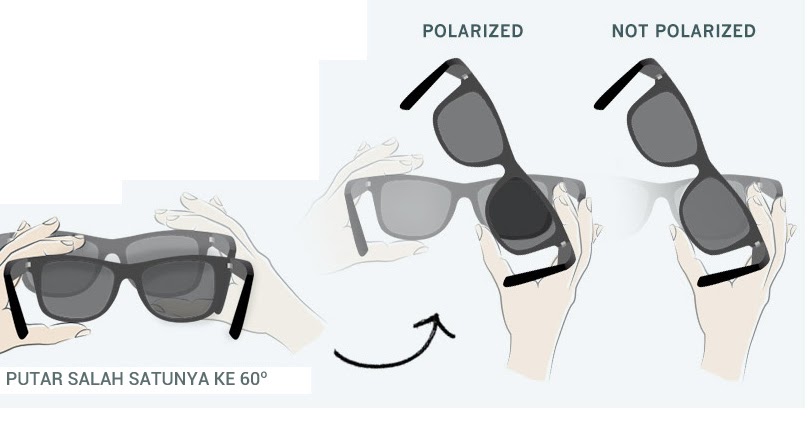
Example
You think you make someone else happy or unhappy. You think all of their emotions are controlled directly or indirectly by your behaviors.
Fallacy of fairness
This cognitive distortion refers to measuring every behavior and situation on a scale of fairness. Finding that other people don’t assign the same value of fairness to the event makes you resentful.
In other words, you believe you know what’s fair and what isn’t, and it upsets you when other people disagree with you.
The fallacy of fairness will lead you to face conflict with certain people and situations because you feel the need for everything to be “fair” according to your own parameters.
But fairness is rarely absolute and can often be self-serving.
Example
You expect your partner to come home and massage your feet. It’s only “fair” since you spent all afternoon making them dinner.
But they arrive exhausted and only want to take a bath. They believe it’s “fair” to take a moment to relax from the day’s chaos, so they can pay full attention to you and enjoy your dinner instead of being distracted and tired.
They believe it’s “fair” to take a moment to relax from the day’s chaos, so they can pay full attention to you and enjoy your dinner instead of being distracted and tired.
Blaming
Blaming refers to making others responsible for how you feel.
“You made me feel bad” is what usually defines this cognitive distortion. However, even when others engage in hurtful behaviors, you’re still in control of how you feel in most situations.
The distortion comes from believing that others have the power to affect your life, even more so than yourself.
Example
Your partner comments on your new dress and you feel upset for the rest of the day. “You make me feel bad about myself,” you tell them.
Shoulds
As cognitive distortions, “should” statements are subjective ironclad rules you set for yourself and others without considering the specifics of a circumstance.
You tell yourself that things should be a certain way with no exceptions.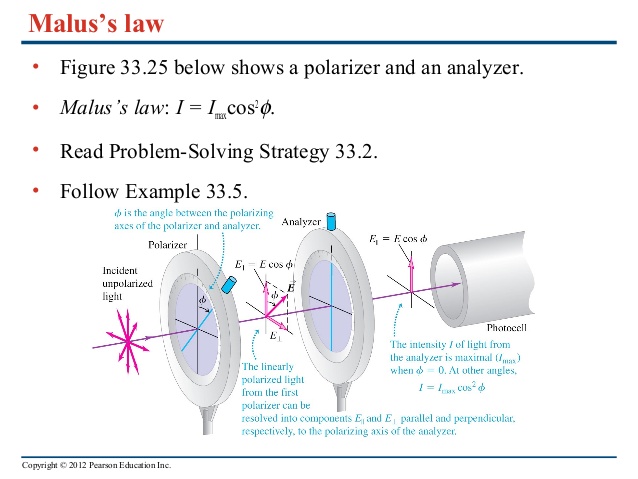
Example
You think people should always be on time, or that someone who is independent should also be self-sufficient and never ask for help.
When it comes to yourself, you might believe you should always make your bed, or you should always make people laugh.
“You should be better,” you constantly tell yourself.
When these things don’t happen — they really depend on many factors — you feel guilty, disappointed, let down, or frustrated.
You may believe you’re trying to motivate yourself with these statements, such as “I should go to the gym every day.”
However, when circumstances change, and you can’t do what you should, you become angry and upset. You got out of work late and couldn’t get to the gym, for example.
Emotional reasoning
Emotional reasoning leads you to believe that the way you feel is a reflection of reality. “I feel this way about this situation, hence it must be a fact,” defines this cognitive distortion.
Example
Feeling inadequate in a situation turns into, “I don’t belong anywhere.”
This cognitive distortion might also lead you to believe future events depend on how you feel.
Example
You may firmly believe something bad will happen today because you woke up feeling anxious.
You might also assess a random situation based on your emotional reaction. If someone says something that makes you angry, you immediately conclude that person is treating you poorly.
Fallacy of change
The fallacy of change has you expecting other people will change their ways to suit your expectations or needs, particularly when you pressure them enough.
Example
You want your partner to focus only on you, despite knowing that they’ve always been very social and value time with friends.
So, every time they go out, you let them know it’s not OK with you. Eventually, you know they will change their ways and want to stay home all the time.
Global labeling
Labeling or mislabeling refers to taking a single attribute and turning it into an absolute.
This happens when you judge and then define yourself or others based on an isolated event.
The labels assigned are usually negative and extreme.
Example
You see your new teammate applying makeup before a meeting, and you call them “shallow.” Or, they don’t submit a report on time, and you label them “useless.”
This is an extreme form of overgeneralization that leads you to judge an action without taking the context into account. This, in turn, leads you to see yourself and others in ways that might not be accurate.
Assigning labels to others can impact how you interact with them. This, in turn, could add friction to your relationships.
When you assign those labels to yourself, it can hurt your self-esteem and confidence, leading you to feel insecure and anxious.
Always being right
This desire turns into a cognitive distortion when it trumps everything else, including evidence and other people’s feelings.
In this cognitive distortion, you see your own opinions as facts of life. This is why you will go to great lengths to prove you’re right.
Example
You quarrel with your sibling about how your parents haven’t supported you enough. You’re convinced this was the case all the time, while your sibling believes it varied according to the situation.
Since your sibling doesn’t feel the same way, you become angry and say things that rub your sibling the wrong way.
You know they’re getting upset, but you continue the argument to prove your point.
Most irrational patterns of thought can be reversed once you’re aware of them. This applies to negative thinking, too.
Still, cognitive distortions sometimes go hand in hand with mental health conditions, such as personality disorders. This makes it more challenging to reframe.
Reaching out to a mental health professional can help if you feel the process is too overwhelming.
Meanwhile, try to remember that it’s not the events but your thoughts that upset you in many instances.
You might not be able to change the events, but you can work on redirecting your distorted thoughts.
Beginning with small changes can be helpful. Here are some tips:
1. Thinking about your thoughts
If an event is upsetting you, step away from it if you can and try to focus on what you’re telling yourself about the event.
2. Replacing absolutes
Once you focus on your thoughts and recognize a pattern, consider replacing statements such as “always” and “nothing” with “sometimes” and “this.”
3. Defining yourself and others
Try labeling the behavior. Instead of labeling yourself “lazy” because you didn’t clean today, consider: “I just didn’t clean today.” One action doesn’t have to define you.
4. Searching for positive aspects
Even if it’s challenging at first, what if you find at least three positive examples in each situation. It might not feel natural, but eventually, it may become a spontaneous habit.
5. Does evidence back up your negative thought?
Before concluding, consider asking, investigating, and questioning yourself and others to ensure you have as many facts as possible. If you can, make an extra effort to believe these facts.
If you can, make an extra effort to believe these facts.
Cognitive distortions are negative filters that impact how you see yourself and others.
When our thoughts are distorted, our emotions are, too. By becoming aware and redirecting these negative thoughts, you can significantly improve your mood and quality of life.
Polarization of thinking as a method of debilitation of the masses
I thought to finally go into the tanks - we'll try in the evening. May be. If you're very lucky.
I once wrote a cycle on psychotronics, and what I am writing now falls under this cycle. A kind of appendix is obtained. All the more interesting because it is based on real material, which also correlates well with previous material. A kind of callback comes out. Which means that the problem exists, remains and has not gone anywhere. This is a shame, because I would like to no longer write on such unpleasant topics. But what to do, what to do, "you have to make good out of evil, because there is nothing else to make it out of," and since we only have feces at our disposal, we will work with feces.
So, polarization. Perception, thinking, consciousness, social processes.
Normally, the psychology of both man and human masses is reactive in nature. That is, someone lives for himself, or a certain community lives, does not grieve, and then an annoying factor appears. Our person (further we will talk about a person, making remarks when there are differences for the social structure), under the influence of an irritant, begins to react. "Fight or flight" for example. Reactions of research activity are still possible. Like "what's that squeaking behind the closet? Aah, the Skripals." Well, some more. In general, there are few of them, psychologists know. When the annoying factor is eliminated, the psyche returns to normal, and our experimental subject continues to kick the bulldozer, as if nothing had happened. This is a normal picture of mental activity.
The reactive nature of mental activity is the norm for the vast majority of people and for all human communities, no matter how unpleasant it sounds against the background of such mirages as "progress" and "the triumph of the mind", and the like . ..
..
Important The quality of reactive activity is that it is carried out only in response to a stimulus, only in interaction with the stimulus, and only at the time when the stimulus exerts its irritating effect. Because she, in fact, is reactive. We react, we react. Before irritation and after - we are quite self-satisfied and self-sufficient consumers of the pleasures of a normal life.
Now about mental trauma. Psychic trauma occurs in response to a stimulus, reactive activity in response to which is insufficient for compensation. Psychic trauma is possible with a high intensity of the stimulus, with a long duration, either with a cumulative effect or with a combination. An important quality of psychological trauma is activity or attitudes that retain the nature of the reaction to the stimulus, even when the stimulus itself is absent. A good example is traumatic and post-traumatic disorder. In the case of a traumatic disorder, we have a lack of compensation, in the case of a post-traumatic disorder, there are post-effects.
Thus, psychological trauma is a loss of the adequacy of the reaction to a stimulus, in the case of a post-traumatic effect, manifested in compensatory activity and in the absence of a stimulus .
Oga. I have already read the lecture. Chord, a great teacher has died in me...
Now for polarization.
Let's say we are talking about a person gaining weight. Is this good or bad? So, young ladies - sat down over there and calmed down, please, no need for tantrums. So. If a hypersthenic by nature, according to the constitution of the body, is gaining weight to the norm - this is normal. If he (a) tries to lose weight below the norm - this is a harm to health. By the way, right on the forehead. Most of the young ladies, who in their youth torture themselves by maintaining a figure in the hope of pleasing their beloved, and subsequently still gaining weight, because nature takes its toll, make a big mistake. Firstly, when they gain weight, they experience a drop in self-esteem, this is expressed in nervousness and falls out on a loved one. Secondly, a loved one, confident that he "ate a candy", discovers with horror that he got a cake from the series "cut into six, I won't eat twelve." The result is a deterioration in the climate in relationships, quarrels, discord, mutual insults, and so on. But if young ladies cared not about external attractiveness, but about beauty and health, then they would meet a person who accepts them as they are, who likes their natural behavior, and who will normally maintain relations with them, because there is no this nervousness, deterioration of relations and disappointment. Do you understand? That is, you don’t have to show off, and then you will get long-term happiness, and if you try to shine, then the shine is short-lived, and life is a long and often unpleasant thing ...
Secondly, a loved one, confident that he "ate a candy", discovers with horror that he got a cake from the series "cut into six, I won't eat twelve." The result is a deterioration in the climate in relationships, quarrels, discord, mutual insults, and so on. But if young ladies cared not about external attractiveness, but about beauty and health, then they would meet a person who accepts them as they are, who likes their natural behavior, and who will normally maintain relations with them, because there is no this nervousness, deterioration of relations and disappointment. Do you understand? That is, you don’t have to show off, and then you will get long-term happiness, and if you try to shine, then the shine is short-lived, and life is a long and often unpleasant thing ...
I was distracted.
So. The weight. If an asthenic by nature begins to gain weight above the norm, then either he is harmful to health, or some kind of illness occurs in him. This is bad. Even if a person has anorexia, weight gain can speak not only about the normalization of metabolism, but also about the pathological process, everything is ambiguous.
So we can't say unequivocally that gaining weight is bad, you know? But one has only to say to a woman "you have gained weight" ...
Here is the best demonstration of polarization .
Polarization is a kind of reaction that implies extreme strategies of behavior. "Fight or flight" is an example of a clearly polarized response. In polarized responses, we have a clear plus and a clear minus, and nothing in between, no middle strategies, no options.
Normally polarized reactions occur in case of stimuli of extreme intensity. However, even this does not always happen. The best example is military activity. A soldier who can only charge at the enemy or only run away from the enemy is a very bad soldier. That is why there are military schools and academies, training grounds and exercises, and so on. Next example. when the polarized response is bad, first aid stress. Here we listened to an interesting lecture for drivers. And there, regarding one psychotype, the teacher directly says (in short, the bones stick out, the meat is out with fur, the blood is gushing) that such a person needs to be fucking removed from the victim, it is best to send him to look for the key to thirteen in the first-aid kit (I whistled about the key, but the meaning is ). Because with a polarized reaction, you can kill a person who is not threatened by anything, trying to help him.
Because with a polarized reaction, you can kill a person who is not threatened by anything, trying to help him.
By the way - the latter is quite realistic ...
We must understand that polarization itself is the absence of intermediate options in a set of human behavioral patterns. If we continue analogies from the world of medicine, then there, during training, students in the anatomy cut corpses. The dead are slaughtered. In a normal person, the reaction to a dead body is polarized (fear of death, all things). In order for a doctor to help, not kill, he must overcome this polarization. He must see, smell, feel the real dead, and at the same time perform a coordinated complex activity. Only when the future doctor overcomes the polarization of his reactions when he encounters carrion, with death and its possibility - only then can he become a doctor who will not be taken aback at the sight of blood, convulsions, agony, who will not panic when the patient grabs his throat and will begin to gurgle, and with a calm, slightly cynical look, assess the situation, and very quickly realize that this person has a bone stuck in his throat, and this one is having an epileptic seizure. And will provide the right help. What to do when a bone hits the throat will kill the epileptic, guys, and vice versa ...
And will provide the right help. What to do when a bone hits the throat will kill the epileptic, guys, and vice versa ...
And the symptoms, in general, are very similar if you are not a doctor .
By the way, recently in Russia a tenth grader saved an airliner passenger who had a heart attack. A good doctor will grow up from a boy - he already knows how to overcome a polarized reaction and act reasonably in an emotionally tense situation .
In general, each of us has a whole bunch of polarized reactions. This is fine. In one of the flights into space during the descent, there was a danger that the descent vehicle would burn up in the atmosphere. At the same time, the astronaut (sorry, I don’t remember the last name point-blank) took the logbook, and, despite the overload, put it under him, under his ass. He later explained it this way: "if the capsule breaks and ignites, it will be the last place that the fire will reach." I don't think we should all develop these reactions, it's a very unhealthy thing to do, you know? Therefore, the presence of polarized reactions in the human psyche is normal and objectively conditioned. Polarized reactions compensate for the measure of our ignorance, guys, the measure of our illiteracy, the measure of our lack of skill and experience .
Polarized reactions compensate for the measure of our ignorance, guys, the measure of our illiteracy, the measure of our lack of skill and experience .
In other words, a person reacts polarized in a situation for which he is not trained, psychologically unprepared and does not have the opportunity and resources to cope with it otherwise .
That is, a polarized reaction is an extreme reaction, often uncontrolled, and very often counterproductive, manifesting itself when we have no other reactions. In short, the polarized reaction is the edge.
It is needless to say that once in an environment similar to the one in which the mentioned cosmonaut was, an ordinary person can experience a state of shock, fall into a stupor, start praying (by the way, a good thing, I recommend it), he will sort out imaginary options for salvation in his head, maybe just go crazy. History knows several more such cases. So, during the flight to the Moon, the Apollo 13 crew lost a significant part of their supplies and equipment and found themselves in a hopeless situation. Having shown miracles of will, working together with the control center, they did everything possible and survived. Alexei Leonov found himself in an emergency situation during a spacewalk, later, upon landing, he and Belyaev were once again in mortal danger, and already on Earth, being far from the landing point, they almost died. In short, for astronauts, for people who have gone through the training cycle for space flights, situations of mortal danger are a zone of diverse and rich skills and patterns of behavior, the main of which is to calm down, think and do. An ordinary person in ordinary life does not need to develop such skills for super stressful situations, and if he objectively needed it, then it would not be life, but a continuous nightmare with drafts...
Having shown miracles of will, working together with the control center, they did everything possible and survived. Alexei Leonov found himself in an emergency situation during a spacewalk, later, upon landing, he and Belyaev were once again in mortal danger, and already on Earth, being far from the landing point, they almost died. In short, for astronauts, for people who have gone through the training cycle for space flights, situations of mortal danger are a zone of diverse and rich skills and patterns of behavior, the main of which is to calm down, think and do. An ordinary person in ordinary life does not need to develop such skills for super stressful situations, and if he objectively needed it, then it would not be life, but a continuous nightmare with drafts...
It is possible to roughly estimate what skills you have, where the zone of polarization lies for you. To do this, you need to imagine, only honestly, various situations, and understand how you would act in one or another of them. If you have a high threshold for personal honesty, and the horrors you imagine won't trigger your fantasy (which is a compensatory response), then you can accurately and accurately map the situations you'd better avoid getting into with yourself.
If you have a high threshold for personal honesty, and the horrors you imagine won't trigger your fantasy (which is a compensatory response), then you can accurately and accurately map the situations you'd better avoid getting into with yourself.
If we talk about the lack of life skills, patterns of behavior, and so on for specific situations, then the effect of anticipatory compensatory reaction is triggered. So, many boys learn boxing and all kinds of martial arts in order to be ready in case of emergency. You need to understand that the initial motivation for such activities is fear. Fear of being unprepared, of failing. It is he who drives people, and not at all the desire to become strong or develop the will. Serious martial arts or boxing classes are impossible without a competent instructor, since it is the instructor who can assess your real psychological state and understand whether you need to practice or not. After the army, I looked like a "scuffle", but very quickly found that my head was starting to go crazy, and I realized that my scuffle was over. In order to act correctly and in a controlled manner in a duel situation, punching and blocking skills, physical preparation, tone and endurance are much less important than psychological attitudes. Even when preparing an athlete, starting from a certain level - and an athlete does not get into a situation in the ring where they obviously want to kill him - psychological training is used. An athlete knows the limits of his capabilities, he forms (if everything is in order with his head) the correct system of attitudes and restrictions, he is clearly ready for a certain list of situations, and in normal life, as a rule, high-ranking athletes demonstrate high psychological stability, calmness and rationality. Self-training, without the psychological control of the instructor, leads to the formation of incorrect emotionality; in the presence of physical form and skills, they do not give psychological readiness. At best, such a self-made boxer changes the psychological template of the victim to the template of a predator, that is, he replaces the "run" reaction with the "hit" reaction.
In order to act correctly and in a controlled manner in a duel situation, punching and blocking skills, physical preparation, tone and endurance are much less important than psychological attitudes. Even when preparing an athlete, starting from a certain level - and an athlete does not get into a situation in the ring where they obviously want to kill him - psychological training is used. An athlete knows the limits of his capabilities, he forms (if everything is in order with his head) the correct system of attitudes and restrictions, he is clearly ready for a certain list of situations, and in normal life, as a rule, high-ranking athletes demonstrate high psychological stability, calmness and rationality. Self-training, without the psychological control of the instructor, leads to the formation of incorrect emotionality; in the presence of physical form and skills, they do not give psychological readiness. At best, such a self-made boxer changes the psychological template of the victim to the template of a predator, that is, he replaces the "run" reaction with the "hit" reaction.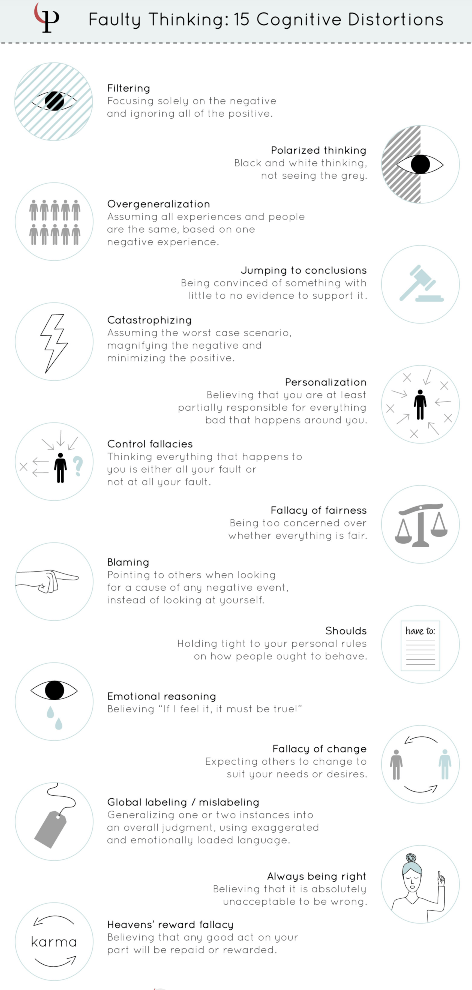 However, it is easy to see that in this case the polarization of the reaction is completely preserved. This means that psychological unpreparedness for a complex, diverse, flexible response to what is happening is also preserved.
However, it is easy to see that in this case the polarization of the reaction is completely preserved. This means that psychological unpreparedness for a complex, diverse, flexible response to what is happening is also preserved.
If we look at champions, we see that it is the latter qualities - flexibility, complexity, variety - that are their strengths. That is - they not only know how to beat in the face, they also know how to do a lot of other things, which, in fact, makes them champions. In martial arts, psychological preparation generally comes first. All this "mysticism" like the energy of "Chi", channels, breathing exercises and other things, missed during amateur studies, actually lies at the heart of everything. It is these empty and meaningless at first glance exercises that train psychological readiness, expand the operator's sphere, and turn a polarized reaction into a multipolar, variable one.
There are many legends about Eastern schools, and you have heard them, and here is another one for you. Once a young man came to the master and asked him, of course, to teach. The master said - well, go fetch some water. And for many years the young man was engaged in economic activities. And all these years, the master, entering the room where the student worked, grabbed a stick and beat him. The student dodged, dodged, and finally reached such a degree that the master could no longer hit him, no matter how hard he tried. But at one point the student's patience snapped. "Master" - he said - "when will you start teaching me"? To which the master replied: "I have already taught you everything. If I cannot hit you, no one will be able to hit you."
Once a young man came to the master and asked him, of course, to teach. The master said - well, go fetch some water. And for many years the young man was engaged in economic activities. And all these years, the master, entering the room where the student worked, grabbed a stick and beat him. The student dodged, dodged, and finally reached such a degree that the master could no longer hit him, no matter how hard he tried. But at one point the student's patience snapped. "Master" - he said - "when will you start teaching me"? To which the master replied: "I have already taught you everything. If I cannot hit you, no one will be able to hit you."
It would seem that this fairy tale is bullshit, right? But let's look at some thoughts.
I would like to point out that for many years the disciple has been persevering. That is, he had an active, strong-willed attitude to what was happening. He didn't break down, he didn't run away. If he ran away, everything would be over. At the same time, over and over again getting into situations of receiving cuffs from the master, he learned to avoid, evade. The range of his reactions when faced with a duel situation turned out to be very wide, so wide that the martial artist could not hit him.
The range of his reactions when faced with a duel situation turned out to be very wide, so wide that the martial artist could not hit him.
We see how the student moved from a polarized reaction to a developed reaction system, how he trained for many years both his psyche to be in constant readiness, and his body and motor skills to repel an attack. The master kept his word, and the young man really became ready for fights - both mentally and physically .
What does this say?
Guys, you can find your problem areas. If you have a high threshold of honesty, and you will try hard. But my advice to you. Contact qualified professionals, please. Don't self-indulge. Proper working out of problem areas is very serious, because problem areas. On the other hand, some of these "problem areas" are the result of suspiciousness, and you will not understand this - but a professional will understand. I understand that everyone will now rush to the massacre clubs, but in fact it is much better to turn to psychologists. For the path from a trembling creature to an international class master of sports takes many years, and it’s not a fact that it will turn out, and here such interesting garbage plays that a boxer-athlete is, of course, cool. But in a real life-and-death battle, completely different psychological attitudes and skills are required .
For the path from a trembling creature to an international class master of sports takes many years, and it’s not a fact that it will turn out, and here such interesting garbage plays that a boxer-athlete is, of course, cool. But in a real life-and-death battle, completely different psychological attitudes and skills are required .
Boxing will not calm you down, and will not improve things much if you are trying to prepare for a combat situation .
Why am I talking about this so confidently? At one time I talked with sports psychologists at the level of the national team, and I sort of understood something in this life. And in order not to be unfounded, I want to give you an example - the Russian boxer Nikolai Valuev.
Here is a short article for you about the place of education in sports. I focus on the theme of Valuev's thesis. "Psychological state and activity of men and women involved in boxing at different stages of training". Once again I draw your attention - we are talking about psychological work.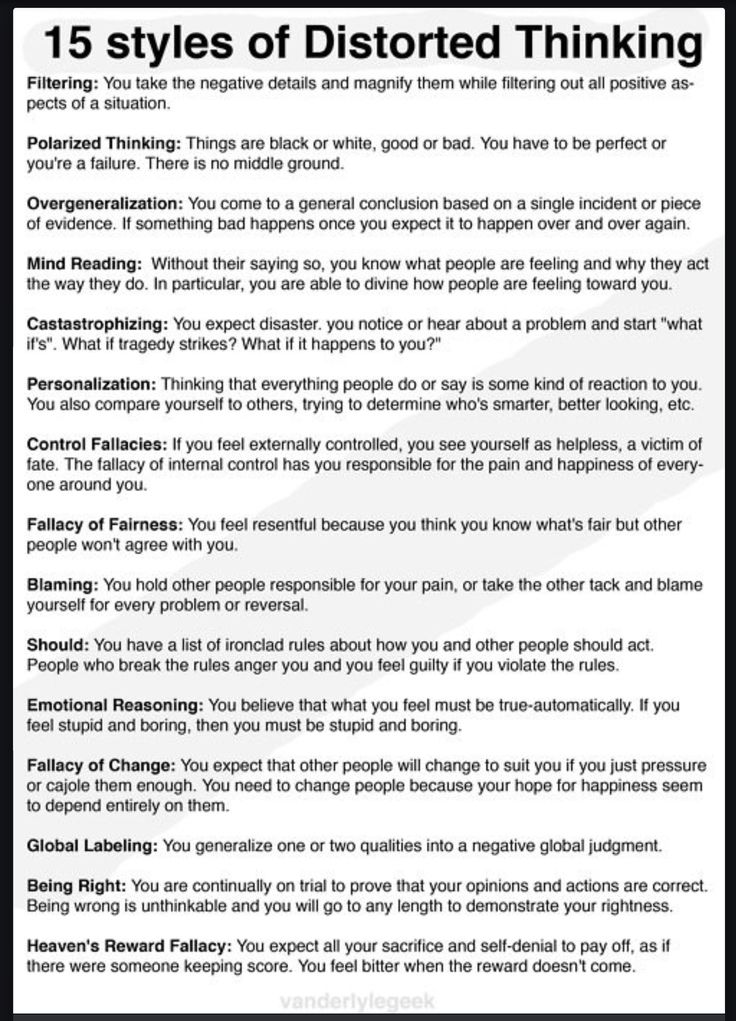
In particular, about the transition from a polarized reaction to a developed system of behavioral patterns .
For those who smiled after reading the topic of Valuev's diploma (I once blew up - because no one canceled the sense of humor), I want to note that at the beginning of the space age, when compiling the cosmonaut training program, everything was taken from sports medicine and psychology possible - and taken a lot. That is, we are talking about the area thanks to which, in particular, Leonov, Belyaev, Lovell, Swigert, Hayes survived .
I hope you have received a piece of information about what is reactive behavior, trauma, polarized reaction, and in particular - realized the limitations of the latter, and also approximately got acquainted with the depth of the problem. This is where we will probably finish with the individual, and in the next part we will move on to the collective and mixed aspects of the problem.
Excuse me - the topic is complex and interesting in itself. It's impossible to fit into one post either by volume or because of fatigue. ...
It's impossible to fit into one post either by volume or because of fatigue. ...
Polarized thinking, cognitive distortions / psychology
Let's first say that polarized thinking is a cognitive distortion. This means that this is a logical error in which we assume without realizing. We ambiguously process the information provided by reality, and this leads us to some emotional breakdown.
Cognitive distortions have been described by Albert Ellis and Aaron Beck. In general, they are defined as erroneous beliefs that lead to dysfunctional moods . These are irrational fears or unreasonable sadness, etc. Polarized thinking is one of those ways of cognitive distortion.
What is in polarized thinking is an extreme simplification of reality. Things are white or black, good or bad, etc. . You cannot see the nuances that exist between one extreme and the other. Someone who has this type of distortion feels comfortable seeing reality in one of its extremes. Why is this happening? How to overcome it? Let's watch.
Why is this happening? How to overcome it? Let's watch.
" It is always wrong to generalize ".
-Hermann Keyserling-
Characteristics of polarized thinking
The main characteristic of polarized thinking is the tendency to generalize and embrace different realities within the same category . That is why the favorite words of those who think so are the most categorical: always, never, everything, nothing, etc. They do it automatically. They must put in any of these boxes any single incident that comes their way..
It is worrying that these extreme categories tend to be very negative . They use them to confirm the existence of something bad . Those who think this way often use expressions such as “things turn out badly” or “always benefit from me.” And similar reasoning.
For those who have a polarized thought, it is as if there were no nuances or middle points . They build a good part of their identity on these compelling classifications and look for ways to find everything there. And even if reality shows them that they are wrong, they do not want to give up radicalization..
They build a good part of their identity on these compelling classifications and look for ways to find everything there. And even if reality shows them that they are wrong, they do not want to give up radicalization..
Why does this cognitive distortion occur?
In general, polarized thinking is characteristic of those who take the position of the victim before life . Nobody does it just on a whim. This is an emotional block that is the product of poorly resolved experiences. At the heart of everything is the idea that a person has experienced "bad things" and that he did not deserve it.
The victim accepts himself as a passive object of circumstances or "destiny". And deny it . He does not believe that he has control over the negative events he has experienced and the control he has given them. It is assumed that this was a passive depository of damage and that he can do nothing about it.
Then it is a blockade of emotional development. These types of people still see themselves as a child. They have not found tools or acquired resources that can be used to overcome many of their difficulties. . In return, they project their complaint and accept polarized thinking as support for their existential position.
Overcome polarized thinking
This type of thinking is not only a cognitive error, but also implies previously unresolved difficulties. Overcoming this involves taking a new perspective on our own history and who we are now that we can now . Accepting the position of victims of circumstances also implies a gain: it frees us from responsibility. And, of course, to get out of there, we must admit that we are responsible for what happens to us, but, above all, for how we approach it..
A good way to start is with these machines. Set an alarm every time we say the categorical words like "never", "always", "everything", "nothing", etc.














